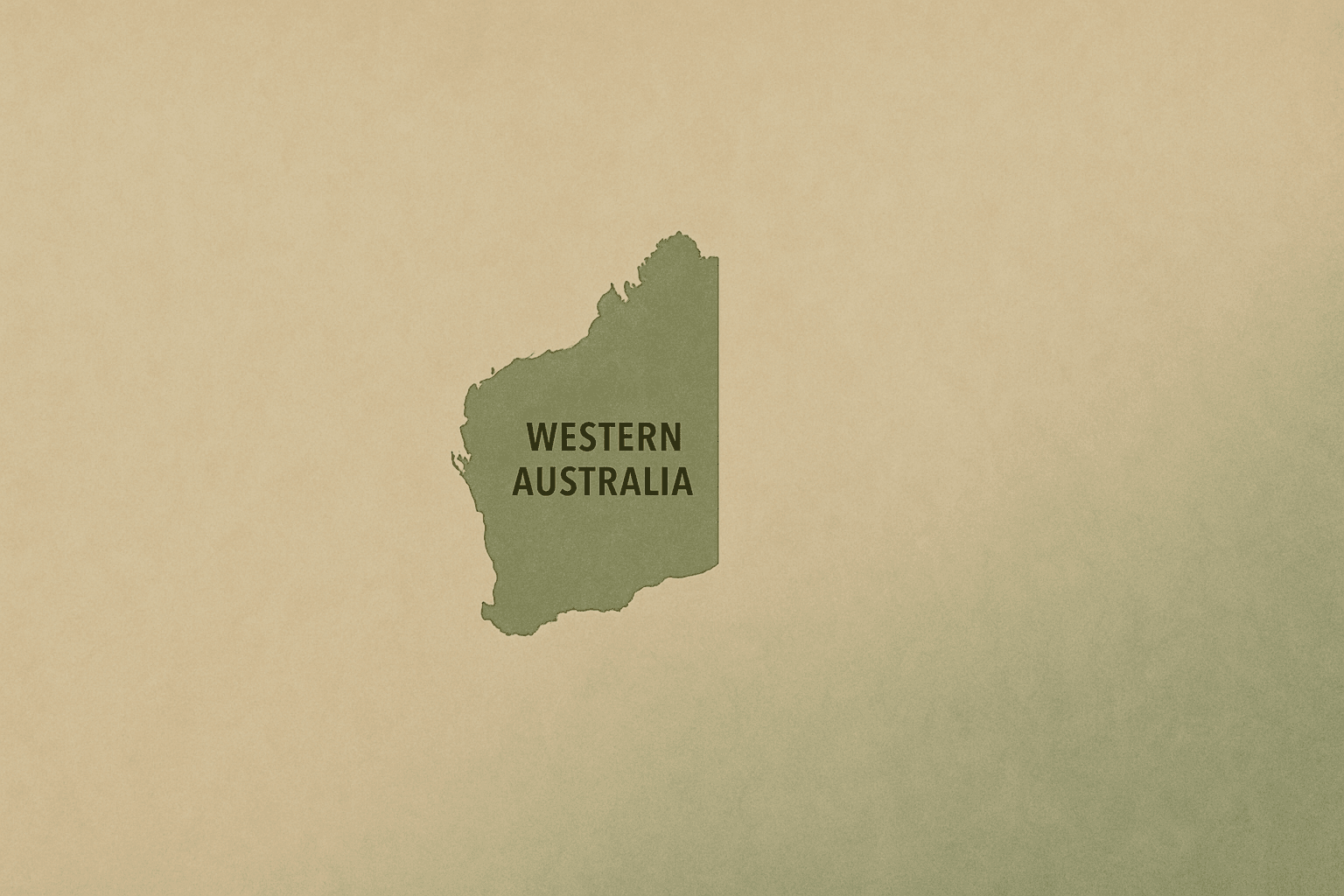Last Updated on June 9, 2025
Western Australia is home to 112 national parks, covering 6.5 million hectares of stunning landscapes, from ancient gorges to pristine beaches. This guide highlights 12 must-visit parks that showcase the region’s unique biodiversity, outdoor adventures, and cultural heritage. Here’s what you’ll find:
- Karijini National Park: Explore dramatic gorges and crystal-clear pools.
- Purnululu National Park: Marvel at the iconic Bungle Bungle Range.
- Kalbarri National Park: Experience coastal cliffs and river gorges.
- Cape Le Grand National Park: Relax on white-sand beaches with kangaroos.
- Nambung National Park: Wander through the Pinnacles Desert.
- Fitzgerald River National Park: Discover rare plant species and rugged coastlines.
- Cape Range National Park: Snorkel Ningaloo Reef and visit Yardie Creek Gorge.
- John Forrest National Park: Hike trails near Perth with waterfalls and wildlife.
- Francois Peron National Park: See red cliffs and turquoise bays in Shark Bay.
- D’Entrecasteaux National Park: Explore sand dunes and remote beaches.
- Mirima National Park: Visit the "Mini Bungle Bungles" near Kununurra.
- Walpole-Nornalup National Park: Walk among towering tingle trees.
Quick Tips for Visiting:
- Best Time to Visit: Seasons vary by park, but spring (September–November) is ideal for wildflowers and cooler weather.
- Passes: Entry costs range from $15/day to $130/year. Book campsites early during peak seasons.
- Safety: Carry water, maps, emergency gear, and follow marked trails.
Whether you’re after adventure, relaxation, or a glimpse into Australia’s natural heritage, these parks offer something for everyone. Read on for details about each park and how to plan your trip.
5 Best National Parks in Western Australia
Before You Visit
Planning a trip to Western Australia’s national parks? Careful preparation is key to having a safe and enjoyable experience. Here’s what you need to know before heading out.
What to Pack
Make sure you have the right gear. Essentials include sturdy hiking boots, high-SPF sunscreen, a first aid kit (don’t forget snake bite bandages), detailed maps, and at least 4 liters of water per person per day. If you’re venturing into remote areas, an emergency beacon is a must.
For overnight stays, bring reliable camping gear, like a weatherproof tent and sleeping equipment suited to local conditions. Fully equipped 4WD rentals with rooftop tents and solar systems are a great option for exploring multiple parks.
Passes and Permits
| Pass Type | Cost | Duration |
|---|---|---|
| Day Pass | $15 | 24 hours |
| Holiday Pass | $60 | 4 weeks |
| Annual Pass | $120 | 12 months |
These passes cover entry to applicable parks for the specified time period. You can buy them through the Department of Biodiversity, Conservation and Attractions (DBCA) website or at park entry points. Camping permits must be booked separately, especially during school holidays or peak months (June to September).
At Offgrid campers WA, we include a free National Park annual pass into all our vehicles, meaning you do not have to pay for passes and permits when traveling Western Australia. Just remember that this does not make camping in national parks free (it only covers the access to the NP) and will not included aboriginal lands requiring specific permits!
Staying Safe
Western Australia’s parks can be remote, so preparation is critical. Check weather updates and park alerts before your trip, register your plans with park rangers, and carry emergency communication tools. Always bring enough fuel, food, and water, and stick to marked trails.
Key emergency numbers:
- 000: For life-threatening emergencies
- 13 CALM (1300 2256): Park ranger assistance
- 1800 705 020: Roadside assistance
Traveling Responsibly
Help protect the parks by following ‘Leave No Trace’ principles. Use designated campfire areas when allowed, and keep a safe distance from wildlife.
Many parks have limited or no mobile coverage, so offline maps and pre-downloaded resources are essential. Download the Emergency+ app for location-based emergency help.
Facilities vary from basic to fully equipped, so check what’s available at each park before you go. Some remote parks, like Purnululu National Park, require a high-clearance 4WD, while others, like John Forrest National Park, can be accessed with a standard vehicle.
Once you’re prepared, you’re all set to explore Western Australia’s incredible national parks, starting with Karijini.
1. Karijini National Park
Tucked away in Western Australia’s Pilbara region, the Karijini National Park is a stunning showcase of ancient landscapes shaped over two billion years. With its dramatic gorges, waterfalls, and crystal-clear pools, it’s a dream destination for those who love adventure and nature.
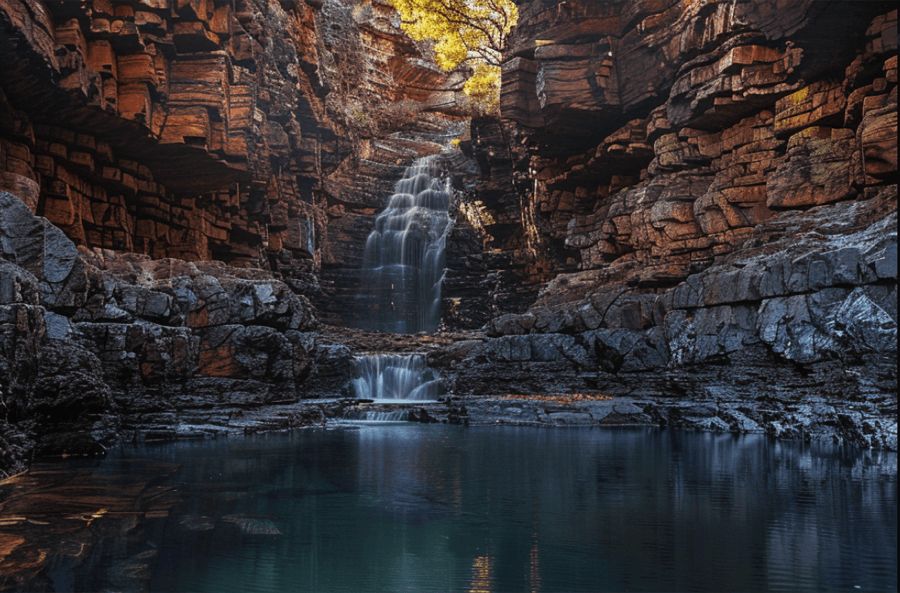
Iconic Gorges and Trails
Karijini is home to breathtaking gorges and trails that cater to various hiking abilities. Highlights include Dales Gorge with Fortescue Falls and Fern Pool, Hancock Gorge’s famous ‘Spider Walk’ leading to Kermits Pool, and Weano Gorge’s Handrail Pool.
| Gorge Trail | Difficulty | Distance | Duration |
|---|---|---|---|
| Joffre Waterfall | Class 5 | 1.3km return | 2 hours |
| Hancock Gorge Spider Walk | Class 5 | 1.5km return | 2 hours |
| Fortescue Falls | Class 3 | 800m return | 1 hour |
| Fern Pool | Class 4 | 600m return | 30 minutes |
Accommodation Options
Visitors can choose to stay at Dales Campground, which offers basic amenities, or opt for the Karijini Eco Retreat for a more comfortable, safari-style experience that also provides insight into the local culture.
Essential Tips
- Wear sturdy footwear, as the trails can be steep and slippery.
- Swimming at Fern Pool is a popular activity, but always check for seasonal conditions, like flash floods.
- Stick to marked trails and follow ‘Leave No Trace’ principles to help protect the park’s natural beauty.
Cultural Significance
Karijini is the traditional land of the Banyjima, Kurrama, and Innawonga people. Visitors have the chance to learn about its rich Aboriginal heritage. The Karijini Eco Retreat, owned by local Aboriginal groups, combines cultural experiences with the park’s natural wonders.
2. Purnululu National Park
Hidden away in the northeast corner of Western Australia, Purnululu National Park is home to the Bungle Bungle Range, a UNESCO World Heritage Site.
These unique beehive-shaped sandstone domes, striped in orange and grey, have been sculpted over 350 million years, showcasing nature’s incredible handiwork.
Popular Walking Trails
Purnululu’s trails offer unforgettable views of its dramatic scenery:
| Trail Name | Distance | Difficulty | Highlights |
|---|---|---|---|
| Cathedral Gorge Walk | 2 km return | Moderate | Stunning natural amphitheater, amazing acoustics |
| Echidna Chasm Walk | 2.5 km return | Challenging | Narrow gorge with towering walls |
| Picaninny Creek Walk | 7 km return | Difficult | Creek bed with iconic dome views |

How to Get There
The park is 300 km south of Kununurra and requires a 4WD vehicle to access. The 53 km track from the Great Northern Highway can only be traveled during the dry season (April to October) when conditions are safe.
Where to Stay
Visitors can choose between the Bungle Bungle Caravan Park or the park’s two campgrounds, Kurrajong and Walardi. Both campgrounds offer basic amenities and stunning sunset views.
Tips for Your Visit
To make the most of your trip:
- Book a helicopter tour to see the domes from above.
- Bring plenty of water.
- Respect sacred Aboriginal sites.
- Plan hikes in the cooler hours of the morning or evening to avoid the midday heat.
Purnululu is co-managed by the DBCA and the Kija and Jaru peoples, ensuring both its natural beauty and cultural heritage are protected. This partnership highlights the importance of preserving these ancient landscapes while honoring the traditions of its Indigenous custodians.
3. Kalbarri National Park
Just a 6-hour drive north of Perth, Kalbarri National Park offers a stunning mix of rugged coastal cliffs and dramatic river gorges spread across its 186,000 hectares. It’s a destination that perfectly blends Western Australia’s diverse landscapes.
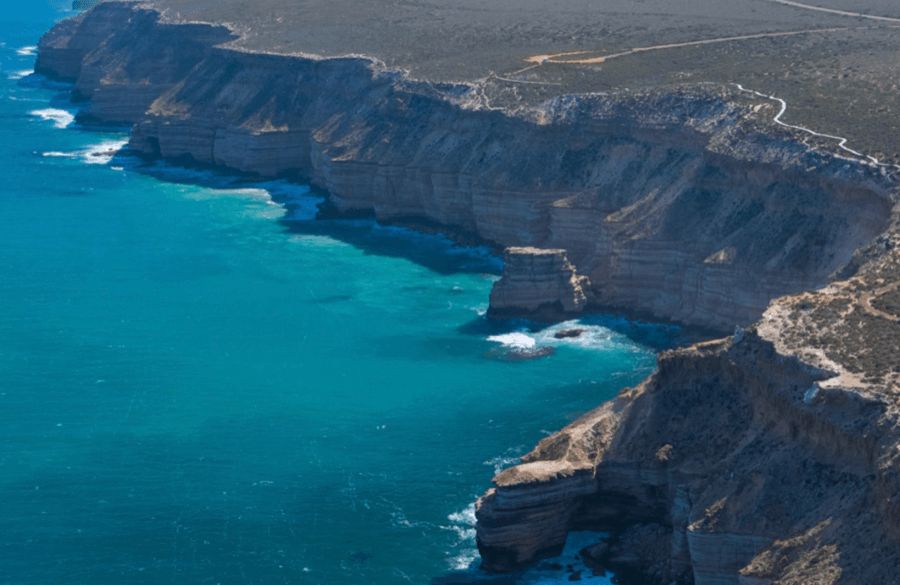
Natural Highlights
One of the park’s standout attractions is the Kalbarri Skywalk, where two cantilevered platforms extend 25 and 17 meters beyond the cliffs, giving you breathtaking views of the Murchison River Gorge.
For hiking enthusiasts, here are some popular trails:
| Trail Name | Distance | Duration | Difficulty | Highlights |
|---|---|---|---|---|
| The Loop Walk | 9 km | 3-5 hours | Moderate-Challenging | Sandstone cliffs, river views |
| Z Bend Lookout | 1.3 km return | 45-60 min | Moderate | Z-shaped river bend vista |
| Natural Bridge to Island Rock | 1.8 km return | 30-60 min | Easy | Coastal formations |
| Bigurda Trail | 8 km one-way | 3-5 hours | Moderate | Dramatic cliff-top views |
Best Time to Visit
Plan your trip between April and October. This period offers cooler weather, blooming wildflowers, and the unforgettable sight of migrating whales.
Essential Tips
Kalbarri’s trails can be tough, especially in the heat. Start your hikes early, carry plenty of water, and check trail conditions at the visitor center before heading out.
Where to Stay
Accommodation options near the park include:
- Kalbarri Tudor Holiday Park
- Tasman Holiday Parks Kalbarri
- Murchison House Station for a more rustic, outback vibe
Access and Fees
Kalbarri is easy to reach via sealed roads. Keep in mind, you’ll need a park pass for entry (check the ‘Before You Visit’ section for details).
From the towering cliffs of Kalbarri, we move on to explore the pristine beaches and rugged charm of Cape Le Grand National Park.
4. Cape Le Grand National Park
Cape Le Grand National Park, located 50 kilometers east of Esperance on Western Australia’s southern coastline, is home to some of the most stunning beaches and rugged granite landscapes in Australia. This coastal gem offers a mix of relaxation and adventure.

Natural Highlights
The park’s crown jewel, Lucky Bay, boasts powdery white sand and crystal-clear turquoise waters. It’s also famous for its western grey kangaroos, often seen lounging on the beach – a picture-perfect Australian moment. Granite outcrops in the park provide excellent spots for whale watching during migration season.
Wharton beach is also a popular beach if you are willing to drive further East!
Camping Options
For those looking to stay overnight, the park offers two main camping areas:
| Campground | Features | Amenities |
|---|---|---|
| Lucky Bay Campground | 56 unpowered sites | Flush toilets, showers, BBQ shelters |
| Cape Le Grand Campground | Beachfront setting | Gas BBQs, picnic tables, water |
Note: Campsites can be booked up to 180 days in advance through Park Stay WA, especially important during the busy October to April period.
When to Go
The best time to visit is between December and March, when the weather is hot as it can get quite chilly and windy down there. Spring (September to November) is particularly special, as the park comes alive with colorful wildflowers but will get cold at times.
4WD Adventures
For adventure seekers, the park offers designated 4WD tracks. Rentals from OffGrid Campers WA are allowed at Lucky Bay and Wharton Beach. However, stick to approved areas to help protect the environment.
Helpful Tips
- Pack extra water and supplies, as park facilities are limited.
- Bring sun protection and beach gear for a comfortable visit.
- Campsites at popular spots like Lucky Bay fill up fast, so book early during peak times.
Wildlife Spotting
Beyond the famous beach kangaroos, keep an eye out for pygmy possums and various bird species in the park’s heathlands. The diverse habitats here make it a great destination for wildlife enthusiasts year-round.
5. Nambung National Park
About 200 kilometers north of Perth, you’ll find Nambung National Park, home to the stunning Pinnacles Desert. This unique landscape is dotted with thousands of limestone pillars rising dramatically from golden sands, creating a scene that feels almost otherworldly.
Natural Highlights
The Pinnacles Desert spans 17 hectares and is the park’s main draw. These towering limestone formations, some several meters tall, were shaped over millions of years by erosion and weathering. During spring, the surrounding area bursts into color with blooming wildflowers, adding even more beauty to the scenery.
Visitor Facilities
The Pinnacles Desert Discovery Centre is the go-to spot for visitors, offering useful amenities and information:
| Facility | Details | Availability |
|---|---|---|
| Visitor Centre | Geological exhibits, park history | 9:30 AM – 4:30 PM daily |
| Amenities | Toilets, picnic spots, drinking water | 24/7 access |
| Gift Shop | Souvenirs, refreshments, maps | Centre hours |
Walking Trails
Explore the Pinnacles up close on the Pinnacles Desert Loop Trail (1.5 km), or take the Desert View Trail (1.2 km) to enjoy sweeping views from lookout points.
Photography Tips
For stunning photos, visit during the golden hour – early morning or late afternoon. The soft light casts long shadows, highlighting the textures of the limestone pillars. The Desert View Lookout is a fantastic spot for capturing the landscape.
Essential Visitor Information
You can reach the park via Indian Ocean Drive, near the town of Cervantes. While camping isn’t allowed in the park, Cervantes offers a range of accommodations for those planning to stay overnight.
Safety Guidelines
- Bring plenty of water, especially during hot summer days.
- Stick to marked trails to protect both yourself and the environment.
- Wear sturdy walking shoes and sun protection.
- Maintain a safe distance from wildlife, such as kangaroos and emus.
Best Time to Visit
Spring (September to November) is ideal for visiting. The weather is pleasant, and the wildflowers are in full bloom, making the experience even more memorable.
6. Fitzgerald River National Park
Located on Western Australia’s southern coast, Fitzgerald River National Park covers 297,211 hectares and is part of the UNESCO-listed Fitzgerald Biosphere Reserve. Known for its remote trails, stunning landscapes, and rare plant life, it’s perfect for those looking to escape into nature.
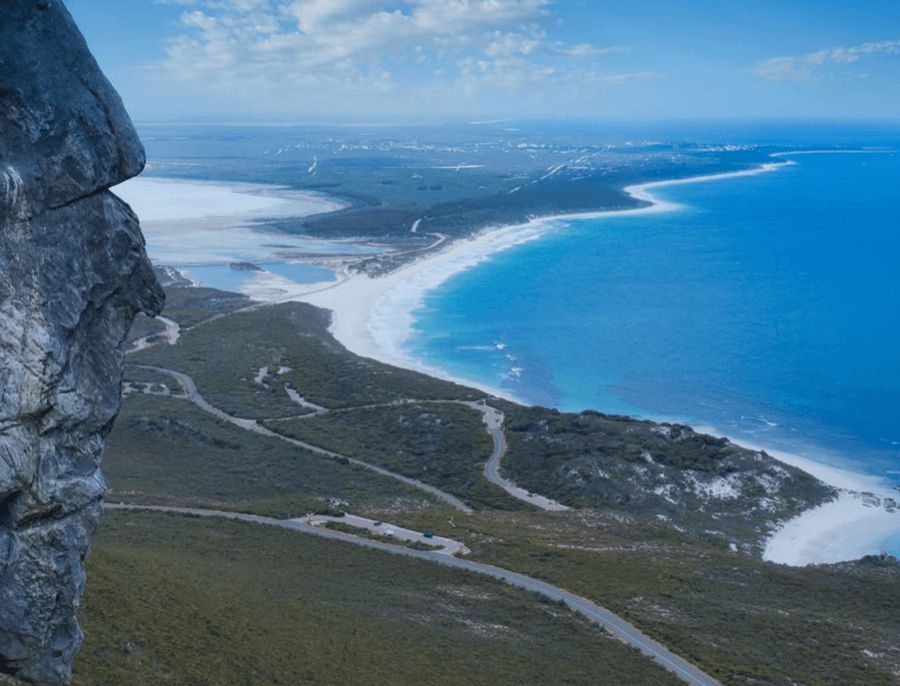
Natural Highlights
The park’s coastline features rugged cliffs, untouched beaches, and impressive granite formations overlooking the Southern Ocean. It’s home to over 1,800 plant species, including 75 that can’t be found anywhere else.
Some standout plants include the Royal Hakea, best seen in spring on northern slopes, the Fitzgerald River Banksia, visible year-round in coastal areas, and the Western Anemone, which blooms in heathlands during winter and spring.
Hiking and Exploration
There’s no shortage of trails for hikers:
- Mamang Trail (10 km): Offers stunning coastal views and whale-watching opportunities from June to October.
- Fitzgerald River Track (40 km): A more demanding route showcasing the park’s diverse ecosystems.
- Quoin Head Trail (5 km): Known for its sweeping coastal vistas.
Camping and Amenities
The park has basic camping facilities at Four Mile and Hamersley Inlet campgrounds, including toilets and BBQ areas. Campsites must be booked through the park office.
Important Visitor Tips
Most roads in the park are unsealed, so a 4WD is recommended, especially in wet conditions. You can access the park via the South Coast Highway, with entrances on both the eastern and western sides.
Spring (September-November) is the best time for wildflower displays, while winter (June-August) is ideal for spotting whales, making the park worth visiting any time of year.
Staying Safe and Protecting Nature
Pack enough supplies, register plans for longer hikes, check road conditions, and watch out for wildlife like snakes. The park is critical for preserving endangered species, and visitors can help by reporting any sightings of invasive species to park staff.
With Fitzgerald River’s incredible biodiversity and breathtaking coastline behind us, next up is the marine beauty of Cape Range National Park.
sbb-itb-3fe747d
7. Cape Range National Park
Located on the North West Cape Peninsula, Cape Range National Park covers 50,581 hectares where dramatic gorges meet a stunning coastline. Its proximity to the UNESCO-listed Ningaloo Reef makes it a top spot for exploring both land and sea.

Natural Highlights
This park is a mix of rugged landscapes and serene beaches. Yardie Creek Gorge showcases striking red limestone cliffs rising above calm blue waters, while Charles Knife Canyon offers sweeping views of the range and Exmouth Gulf.
Along the shoreline, Turquoise Bay is famous for its drift snorkeling, letting you glide over vibrant coral gardens. For a quieter experience, Osprey Bay is ideal for kayaking and catching breathtaking sunsets.
Camping
Both Yardie Creek and Osprey Bay campgrounds provide simple facilities with easy access to the beach and gorge. Make sure to book ahead through Park Stay WA, especially during the busy season from April to October.
Key Details
The best time to visit is between April and October when the weather is mild and perfect for outdoor activities. While a 2WD vehicle can get you to most attractions, a 4WD is useful for exploring more remote areas. Don’t forget to bring 3-4 liters of water per person daily, as there’s no drinking water available in the park.
Wildlife
Cape Range is teeming with wildlife. On land, you might spot kangaroos and wallabies, while the surrounding waters are home to whale sharks (March-July) and sea turtles. Early morning and late afternoon are the best times to see animals in action.
Safety Tips
- Check tide schedules before heading into the water.
- Stick to marked trails when hiking.
- Stay updated on park conditions at alerts.dbca.wa.gov.au.
8. John Forrest National Park
Located just 30 kilometers east of Perth, John Forrest National Park holds the title of Western Australia’s first national park, established in 1900. Spanning 2,677 hectares, it showcases a mix of jarrah and marri forests, scenic waterfalls, and accessible trails, making it a fantastic introduction to the region’s natural wonders.
Nature and Trails
For hiking enthusiasts, the Eagle View Walk Trail stretches 15 kilometers and rewards trekkers with sweeping views of the coastal plain. Families might prefer the shorter Glen Brook Trail, a 2.5-kilometer loop through native bushland.
During winter and spring rains, the park’s waterfalls – Hovea Falls and National Park Falls – come alive. These can be reached via the 1.5-kilometer Hovea Falls Trail, a relatively easy walk.
Wildlife Watching
The park is home to over 90 bird species and a variety of native animals. Western grey kangaroos and wallabies are often seen near picnic areas, while bird enthusiasts might catch glimpses of splendid fairy-wrens or red-tailed black cockatoos in their natural habitats.
Visitor Facilities
John Forrest National Park is well-equipped for a comfortable visit. The John Forrest Tavern offers meals and drinks with stunning bushland views. Picnic areas are thoughtfully set up across the park:
| Location | Amenities |
|---|---|
| Main Picnic Area | BBQs, tables, toilets, water |
| Glen Brook Dam | Sheltered tables, BBQs |
| Railway Reserve | Historical displays, seating |
When to Visit
Spring (September to November) is ideal, with mild weather and vibrant wildflowers in bloom. For summer visits, plan outdoor activities during the cooler early morning or late afternoon hours.
Safety Tips
Stick to marked trails and check weather updates before heading out, as wet paths can be slippery. Stop by the visitor center for the latest trail and safety information.
9. Francois Peron National Park
Located within the Shark Bay World Heritage Area, Francois Peron National Park offers a stunning blend of vibrant red cliffs, white sandy beaches, and turquoise waters. Covering 52,500 hectares, it provides a unique mix of outback scenery and coastal beauty.

Natural Highlights
The park’s coastline is its standout feature, with striking red sandstone cliffs that sharply contrast against the clear blue waters. As part of the Shark Bay World Heritage Area, it supports a rich marine ecosystem, home to dolphins, dugongs, and a variety of bird species.
Access and Accommodation
Accessible only by 4WD, the park has two main tracks: the Peron Peninsula Track, known for its scenic views and wildlife sightings, and the more demanding Herald Bight Track, which leads to secluded beaches and fishing spots.
Some tracks in Francois Peron NP are heavily corrugated so drivers need to be extra cautious!
There are five camping areas – Big Lagoon, Bottle Bay, Gregories, Herald Bight, and South Gregories – offering basic facilities like pit toilets and gas barbecues.
Essential Planning
The best time to visit is between April and October when the weather is more comfortable. Denham, just 12 kilometers away, is the nearest town for supplies. Before heading out, make sure to:
- Reserve campsites ahead of time, especially during busy periods
- Ensure your 4WD is fully equipped and in good condition
- Pack essentials like water, food, emergency kits, sun protection, and safety gear
Swimming and Snorkeling
The park’s beaches are perfect for swimming and snorkeling. The calm bays along the eastern coast offer warm waters year-round, making them ideal for spotting marine life up close.
10. D’Entrecasteaux National Park
Located along Western Australia’s southern coast, D’Entrecasteaux National Park features rugged cliffs, untouched beaches, and thriving marine habitats. It’s a true wilderness where the outback meets the sea.
Natural Highlights
The park is home to the stunning Yeagarup Dunes and the peaceful Warren and Donnelly Rivers. These areas are rich in marine life, making them popular for fishing. Expect to find bream, mulloway, and salmon in the waters. From June to September, the coastline becomes a prime spot for whale watching.
Adventure Activities
There’s no shortage of outdoor fun here:
- Yeagarup Beach: Perfect for 4WD enthusiasts and sand dune exploration (best from April to November).
- Warren Beach: A great spot for fishing and enjoying breathtaking coastal views (open year-round).
- Donnelly River: Ideal for kayaking and birdwatching (September through May).
Camping and Facilities
For those staying overnight, the Yeagarup and Warren campgrounds provide basic amenities like pit toilets, picnic tables, and spaces for caravans. These campgrounds cater to self-sufficient campers. Be sure to book ahead via Park Stay WA, especially during the busy December to February period.
Planning Your Visit
Here are a few tips to make the most of your trip:
- Check tide times and beach conditions before heading out for 4WD activities.
- If fishing is on your agenda, bring the right gear and ensure you have the necessary licenses.
- Prepare for the remote setting, as facilities are limited.
Protecting the Park
Help preserve this beautiful area by following ‘leave no trace’ practices. Avoid disturbing wildlife and ensure you take all rubbish with you. The park’s unique ecosystems depend on these efforts to remain unspoiled.
D’Entrecasteaux National Park’s wild charm sets the stage for our next destination: Mirima National Park, known for its striking red cliffs and a completely different take on Western Australia’s diverse scenery.
11. Mirima National Park
Nicknamed the "Mini Bungle Bungles" for its resemblance to Purnululu National Park, Mirima National Park is just 2km east of Kununurra. Spanning 2,068 hectares, this park is home to ancient sandstone formations shaped over millions of years.

Natural Highlights
Mirima’s standout features are its striking orange and black striped rock formations, surrounded by hidden valleys and rugged cliffs. During sunrise and sunset (5:30-7:30 AM and 4:30-6:30 PM), the rocks light up with a radiant glow, making it a favorite for photographers.
Walking Trails
Mirima offers trails for all fitness levels, each showcasing unique aspects of the park:
| Trail Name | Distance | Difficulty | Highlights |
|---|---|---|---|
| Looking at Plants | 400m | Easy | Native flora, interpretive signs |
| Derdbe-Gerring Banan | 800m | Moderate | Valley views, rock formations |
| Mirima Gorge Trail | 1.5km | Challenging | Hidden gorge, scenic lookouts |
| Ord River Trail | 2.5km | Difficult | River views, wildlife spotting |
Best Time to Visit
Plan your visit during the dry season (May to October) when temperatures are cooler, and trails are easier to navigate. Early mornings are ideal to beat the heat and enjoy tranquil surroundings.
Essential Information
The park has shaded picnic spots, parking, and clean toilet facilities. For up-to-date trail conditions, check with the Kununurra Visitor Centre.
Wildlife and Flora
Mirima is a haven for wildlife, with over 200 bird species and various native animals, including wallabies. Dawn and dusk are the best times to spot these creatures in their natural environment.
Visitor Tips
- Carry at least 2 liters of water per person and wear sturdy shoes and sun protection.
- Set aside 2-3 hours to fully explore the park.
- For photography, early morning and late afternoon light provide the best results.
While camping isn’t allowed in the park, Kununurra offers a range of nearby accommodations, from caravan parks to luxury hotels.
12. Walpole-Nornalup National Park
Located in Western Australia’s Great Southern region, Walpole-Nornalup National Park is known for its towering tingle trees and calm waterways. The standout feature is the Valley of the Giants Tree Top Walk, a 40-meter-high walkway that lets you experience the forest from above.
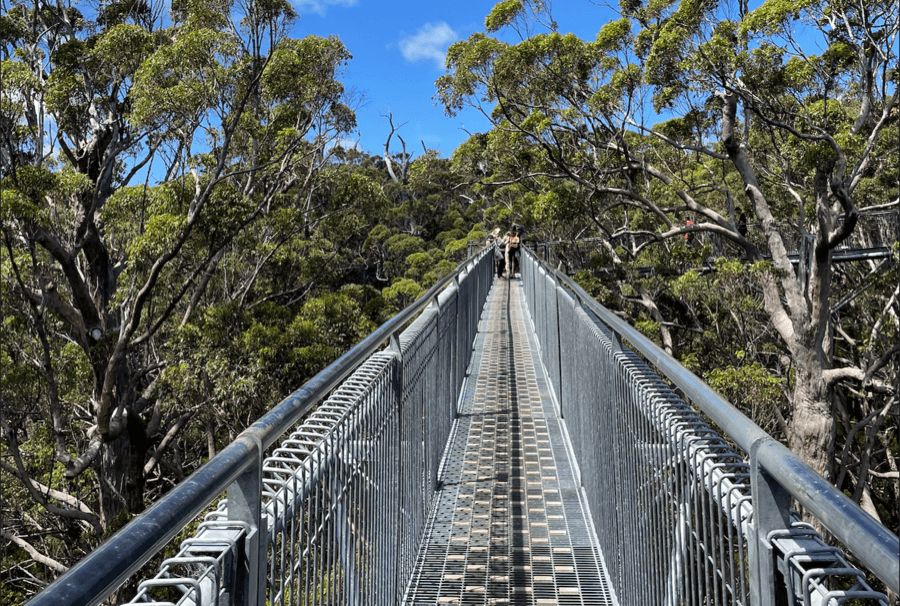
Natural Highlights
This park is home to impressive karri, jarrah, and rare red tingle trees – some over 400 years old. The Deep and Frankland Rivers wind through the area, creating peaceful spots for visitors to explore. In spring, the forest bursts into color with wildflowers like red flowering gum and yellow wattle adding to the scenery.
Trails and Activities
There’s something for everyone here. The Tree Top Walk, a short 600-meter elevated trail, offers breathtaking views of the treetops, while the Ancient Empire Walk (1 km) takes you through the forest floor, weaving around the giant trees.
For more adventurous visitors, sections of the Bibbulmun Track and Munda Biddi Trail are perfect for hiking and mountain biking, especially during cooler months.
Water Activities and Camping Options
The park provides great spots for water activities like kayaking and boating, with launch points at Rest Point and Coalmine Beach. If you’re planning to spend the night, Coalmine Beach offers basic facilities, while Rest Point Caravan Park has more modern amenities.
Best Times to Visit
The park is open year-round, but spring (September-November) or summer season is ideal for its mild weather and blooming wildflowers. Summers can reach up to 30°C, and winter’s cooler, rainy conditions are perfect for capturing the forest’s beauty.
If you’re visiting during peak season (December-February), make sure to book your camping spot early.
Wildlife Watching Tips
Kangaroos, quokkas, and a variety of birds are most active at dawn and dusk, making these times ideal for wildlife spotting. From June to September, you can also see southern right whales along the nearby coastline.
Visitor Information
Before heading out, check road conditions, especially after rain. The nearby town of Walpole has everything you might need, from supplies to accommodation and tour bookings. For the latest park updates, contact the DBCA office in Walpole.
With its ancient forests and peaceful rivers, Walpole-Nornalup National Park is a perfect way to experience the natural beauty of Western Australia’s national parks.
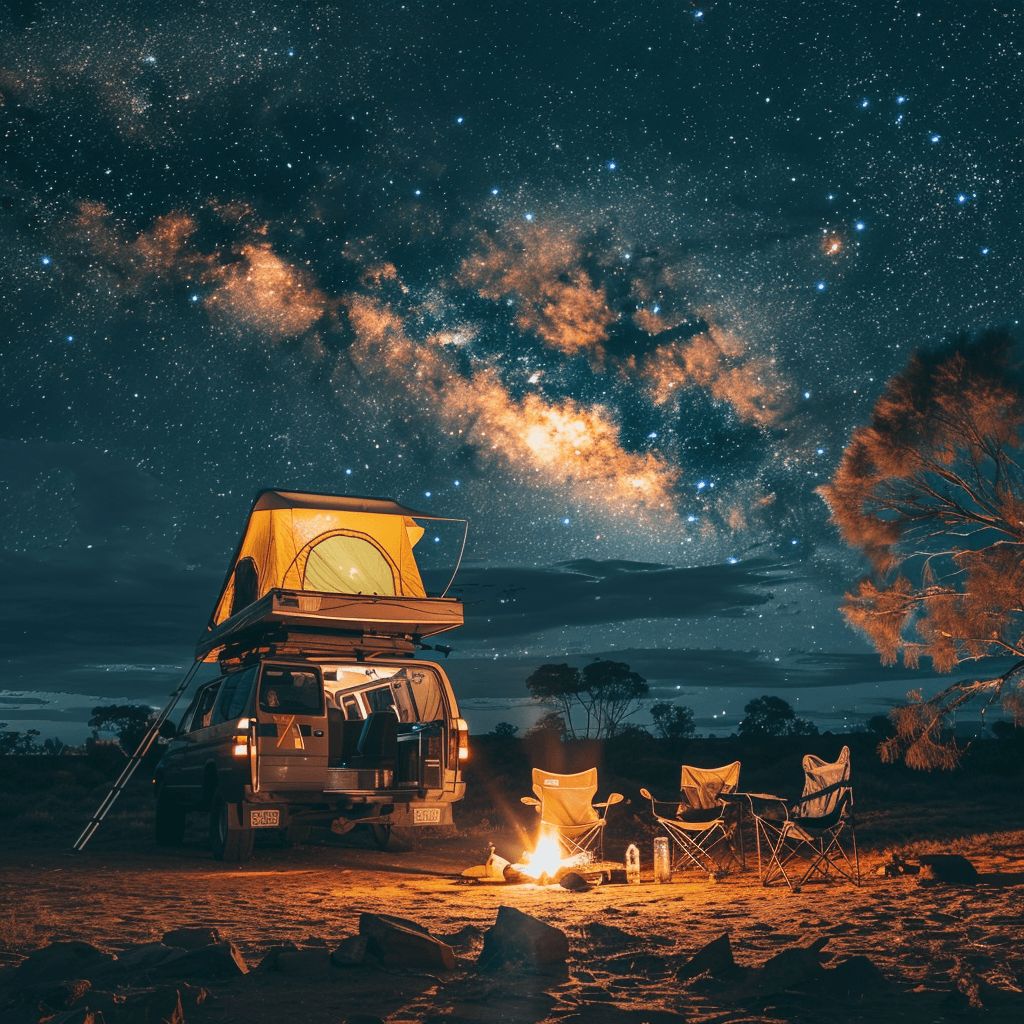
Camping and Accommodation Options
Western Australia’s national parks offer a range of camping and accommodation choices. You can find spots for tents, camper trailers, and caravans across the state’s parks .
- Over 100 campgrounds dot WA’s parks, perfect for overnight stays or day trips.
- Cape Range National Park, part of the Ningaloo Coast World Heritage Area, welcomes campers to its stunning coastal sites .
- Dirk Hartog Island National Park lets you camp after a ferry ride, ideal for four-wheel drive enthusiasts .
- Many parks provide basic facilities like toilets, picnic tables, and fire pits for campers.
- Booking ahead is smart, especially during peak seasons like school holidays.
- Some parks offer glamping options for those who want a bit more comfort in nature.
- Caravan parks near national parks often have powered sites and extra amenities.
- Bush camping is allowed in some areas, but you’ll need to be self-sufficient.
- Park rangers can give you tips on the best spots to set up camp within the parks.
- Always check fire bans before planning to use campfires or portable stoves.
- Some parks have cabins or cottages for rent if you prefer a solid roof overhead .
Conservation Efforts and Park Management
Western Australia’s parks are in good hands. The Department of Biodiversity, Conservation and Attractions (DBCA) manages over 31 million hectares of land and water. 15 They work hard to protect native plants and animals.
The DBCA also makes sure you can enjoy these amazing places safely.
The State Government has big plans for WA’s parks. They want to add five million hectares of new national and marine parks. This will give more space to rare species and beautiful landscapes.
The DBCA also studies how visitors use the parks. They use this info to make your park visits even better. From Karijini to Cape Le Grand, WA’s parks are getting the care they need. 16
Park Passes and Safety
Entry Passes and Fees
Visiting Western Australia’s national parks starts with planning your entry. Most parks charge a day entry fee of $17 per vehicle (up to 12 people), with concession rates at $10. Motorcyclists pay $10 per bike.
For longer trips, consider these multi-day passes:
| Pass Type | Duration | Cost | Ideal For |
|---|---|---|---|
| Holiday Pass | 5 days | $30 | Short getaways |
| Holiday Pass | 14 days | $50 | Longer vacations |
| Holiday Pass | 4 weeks | $70 | Extensive travels |
| Annual All Parks Pass | 12 months | $130 | Frequent visitors |
At Offrgrid Campers WA, most of our vehicles come with a complimentary Annual Park Pass meaning you do not have to pay when you enter a national park in WA!
Safety and Emergency Guidelines
If you’re heading to remote parks, bring a satellite communication device and let someone know your plans. Pack at least 4-5 liters of water per person per day, along with emergency supplies. In areas like Karijini, fuel stations are scarce, with the nearest ones at Tom Price and Auski Tourist Village.
Stay cautious around wildlife, particularly dingoes in Karijini. Avoid feeding them, keep food stored securely, and maintain clean campsites. Camping fees range from $10 to $20 per adult, depending on the facilities, while kids aged 6-15 are charged $5.
Always have a first aid kit and stay informed about:
- Fire danger levels
- Emergency evacuation routes
- Local ranger contacts
"Take note of all hazard signs and directions from the rangers when at a park or reserve." – Explore Parks WA
Protecting the Parks
Do your part to keep these parks pristine by:
- Staying on marked trails to avoid damaging vegetation
- Taking all your rubbish with you
- Skipping sunscreen in gorge pools to keep water clean
- Respecting Aboriginal cultural sites
- Using fuel stoves in areas where campfires are banned
Remember, pets and firearms are prohibited in national parks, and drones are restricted in certain areas like Purnululu.
With your passes sorted and safety precautions in mind, you’re all set to enjoy Western Australia’s stunning national parks while helping to preserve their natural beauty.
Cultural and Historical Significance
Western Australia’s national parks hold deep cultural and historical value. You’ll see ancient rock art, sacred sites, and living traditions of Aboriginal Australians throughout these lands.
The parks tell stories of the world’s oldest living culture, spanning over 60,000 years. In May 2023, the government established Matuwa Kurrara Kurrara National Park. This park demonstrates a new approach to working with Traditional Owners.
It’s jointly managed by Indigenous people and the government, respecting their rights and knowledge.
These parks are more than just natural areas. They’re living museums of human history. You can observe old mining towns, shipwrecks, and colonial buildings. Each park has its own story to tell.
The government now collaborates with Indigenous communities to protect these places. This joint effort helps maintain the land’s health and shares its stories with visitors. It’s a significant step towards respecting the past and building a better future together.
Wildlife and Natural Wonders
Western Australia’s national parks burst with amazing wildlife and natural wonders. You’ll spot kangaroos hopping across Cape Le Grand’s white sandy beaches. In Karijini, you can swim in crystal-clear rock pools nestled in ancient gorges.

The parks teem with unique Aussie animals like emus, wallabies, and colorful birds. Keep your eyes peeled for rare species too. Ningaloo Marine Park offers a chance to swim with gentle whale sharks, the ocean’s biggest fish.
On land, you might glimpse a shy echidna or a spiny thorny devil lizard.
The parks’ landscapes will take your breath away. Purnululu’s Bungle Bungle Range rises from the earth in striped beehive-shaped domes. These rock formations, shaped over millions of years, glow orange at sunset.
In Kalbarri, you can walk out on the Skywalk. This see-through platform juts 25 meters out over the Murchison River Gorge. It gives you a bird’s-eye view of the dramatic 80km long gorge carved by the river. From lush forests to rugged coastlines, WA’s parks showcase nature at its finest.
Summary
Western Australia’s 112 national parks cover an impressive 6.5 million hectares, showcasing a wide range of landscapes and protecting rare ecosystems. From rugged gorges to untouched coastlines, these parks are home to unique wildlife and offer incredible opportunities for exploration.
Highlights include the UNESCO-listed Bungle Bungle Range in Purnululu and the striking coastal cliffs of Kalbarri, which reflect the incredible variety found within these areas. Beyond their natural beauty, many parks also protect important Aboriginal cultural sites, offering visitors a chance to connect with Australia’s deep history.
When planning a visit, timing is everything. Each park has its own ideal season, so research ahead and make campsite reservations early. Traveling responsibly means being well-prepared and respecting the environment – whether by minimising your impact or supporting eco-friendly tourism efforts.
These parks provide a chance to connect with nature, history, and adventure. By respecting park guidelines and adopting sustainable practices, visitors play a role in preserving these incredible places for future generations. This ensures unforgettable experiences while helping to protect Western Australia’s natural and cultural legacy.

